Backcountry Safety for Ultra Runners | Part 2: Satellite Emergency Notification Device (SEND)
By Chase Parnell — May 27, 2020
I hope you enjoyed Part 1 in this series about using the Gaia GPS app for navigation when outside of cell phone range. For Part 2, I’m going to tackle another very important device that has saved over 7,000 people and counting. There are a variety of products out there so I encourage you to do your research. I’m reviewing the Spot Gen3 because it’s the one I own and use. I have no affiliation with the brand in any way. Mostly, I want to communicate the safety benefits of this type of product, not necessarily sell you on this specific unit.
Why Do I Need A SEND?
Okay, let’s start with a hypothetical. It’s the height of summer, you get off work, and there’s enough daylight to justify a quick drive up to the mountains for a sunset mountain ascent in beautiful alpine terrain. It’s still warm at 6pm when you start your run so you opt for a shorts and t-shirt outing. The plan: tag a peak, say 7 miles round trip with 2,500 feet of climbing. Nothing crazy right? Hardly warrants much planning. It’s a no-brainer to not take a water bottle or jacket because the run will only take 90 minutes or so.
You summit as the sun sets over the western horizon, you have your namaste moment, and you start navigating the granite blocks in similar fashion as you’ve done a thousand times on mountains all across this great land. This time, however, you were swept up in your mental highlight reel from Michael Jordan’s “The Last Dance” documentary you watched the night before and you got a little bit carried away on the descent. You insert your leg into a hole between two boulders and you watch as your leg remains stationary as the rest of your body falls forward. POP is the sound your femur makes when it breaks in two like a toothpick.
So there you are on exposed cold rock, excruciating pain threatens to send you into shock, your leg obviously cannot bear weight, and you’re 3.25 miles from the car. It dawns on you that didn’t see anyone else on the ascent and that likely, you were the last peak-bagger of the evening. You quickly begin to shiver from the cold/shock and remember that temperatures will be down below freezing in the night at this elevation. In short, you are epically screwed.
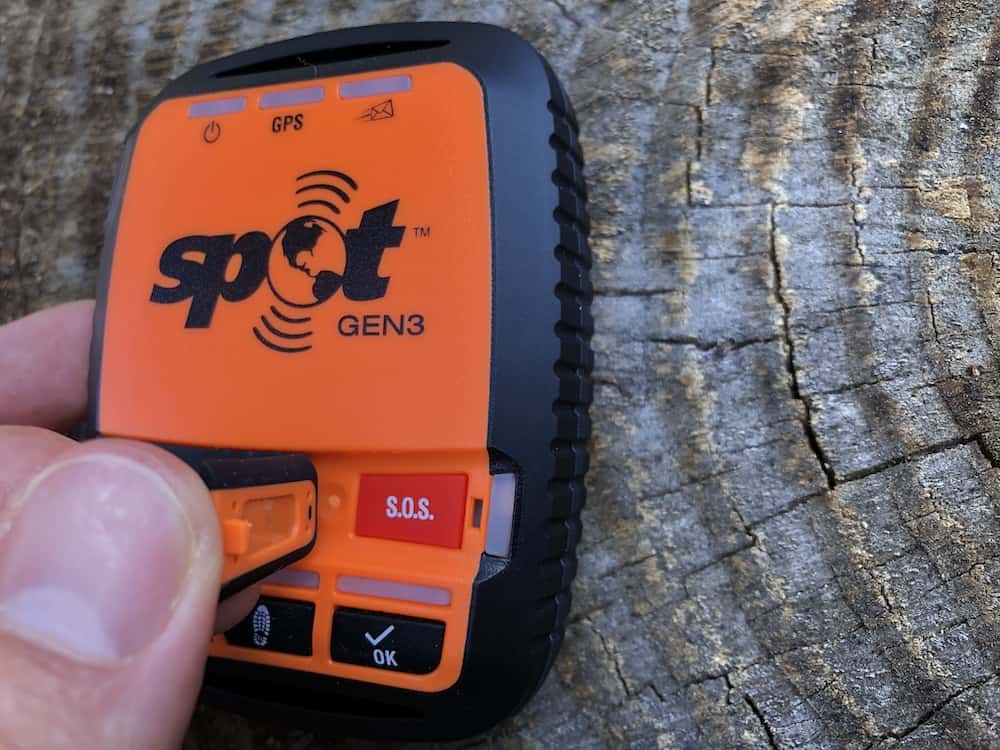
But wait, I’ll be darned, while you didn’t bring water or a jacket, you actually did bring your Spot Tracker because your dog made you promise you would. She’s been worried. You will live to fight another day. You flip open the protective flap and push the S.O.S. button, which pings the GEOS International Emergency Response Coordination Center with your information and coordinates, which they then relay to your local response teams.
Within a few hours, you see headlamps coming up the slope; the friendly rescuers are on the scene to get you out of there. Your Spot literally saved your life.
S.O.S. Function Is Great; What Else Does It Do?
The Spot Gen3 has essentially four other major features, of which, I’ve used two.
The Tracking Feature
This is the button with the footprint on it and is meant to be pushed at the beginning of your adventure so that your people can track you via their computer or phone app. You can set it up to ping your location at a variety of intervals. I used this feature on a 34 mile run in the Ochoco Mountains of Central Oregon recently. My wife was able to log into the Spot App and see a map overlaid by a chain of pings that came from my device. It provided her a little comfort in knowing that I was still on the move. Had she received multiple pings in a row from the same location, I think she would rightly start to get a bit nervous. The tracking feature is also great for Fastest Known Time (FKT) attempts. You can share the link on social media and people can follow your adventure by monitoring your location on a map.
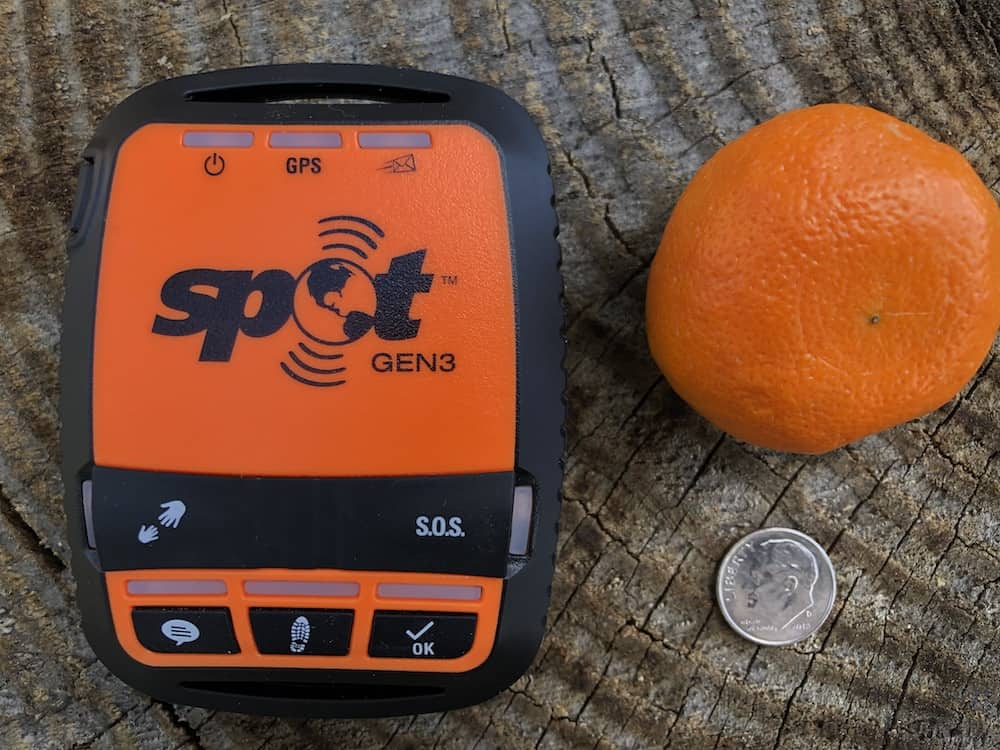
The Check-In Feature
This is the check mark with the OK text on the button. You’ll need to go to the Spot website, link your device, and create a customized message that will be displayed to your contacts with you push this button. This is a message you intentionally send so it’s differentiated from the tracking feature. The idea is to simply check-in and let people know that all is proceeding according to plan. I came up with the following message for whatever reason: “All is peachy. No worries.” I haven’t copyrighted it yet so feel free to use it. Nikki appreciated receiving this message a few times during my outing.
The Custom Message
This is the button with the text cloud on it. It’s another direct message to your list of contacts that you pre-customized online. I wasn’t exactly sure what to include here as it seemed a bit superfluous. But because I have a tendency to make Nikki worry a bit, I programmed this button to say, “All is good, but running later than expected.” That way, if for whatever reason the route was taking me a lot longer than I’d planned due to weather or blow down or fatigue, I could set Nikki’s nerves at ease with a simple press of the button. I suppose you could get creative with this feature. Say, for example, you told your people that you were on the fence about a two or three night adventure. You could program it to say, “Decided to stay the third night, see you on Sunday.”
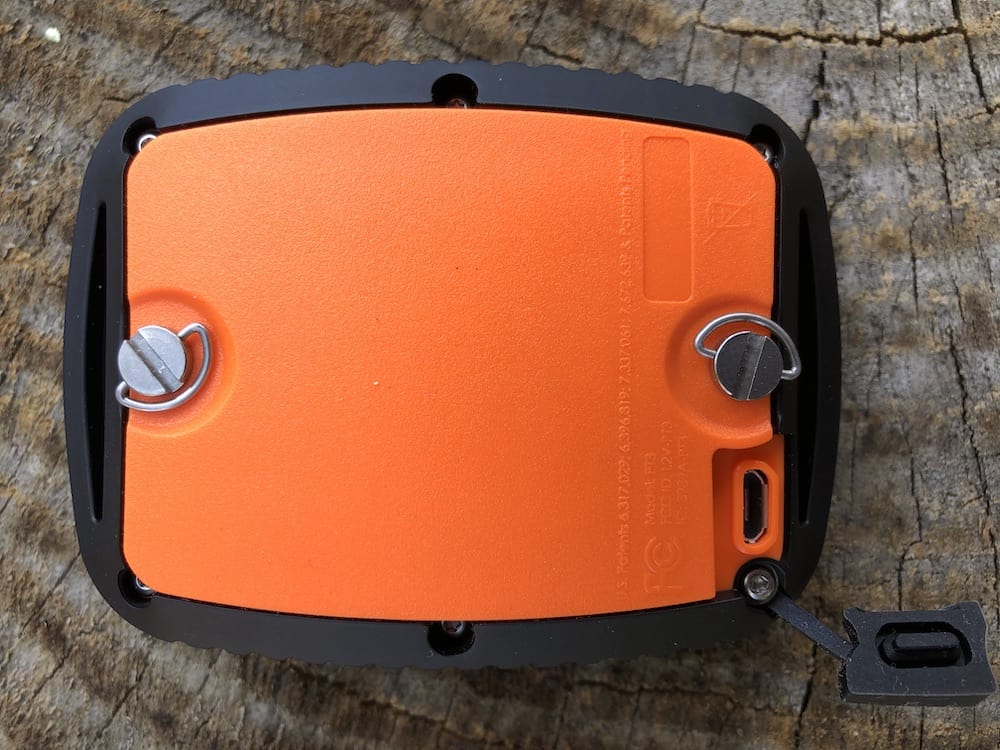
The Help / S.O.V. Feature
This is the button with the two hands on it that you’re supposed to push if you need help from your contacts in a non life-threatening situation. The only scenario I see myself using this would be if my car broke down at the trailhead or if I had a minor injury. but was able to make it back to the car. This is a discussion you’d want to have with your contacts before you head out. Advise them that if they receive the, “Help, non-life threatening” message, you just need them to come to the trailhead that you told them you were starting from. If I experience a life-threatening injury or get lost, I’m hitting the S.O.S. button instead.
For a couple extra dollars a month you can program this button to trigger the Save Our Vehicle (S.O.V.) feature which will tap you into a 24/7 roadside assistance program, which if activated, a local tow company will come rescue you and your vehicle. This could be extremely valuable for those of us that don’t take care of our cars all that well. Or if your battery happens to die at a remote trailhead or you run out of gas en route and you’re out of service, this could save you a lot of drama.
Read some of these rescue stories put out by SPOT. They’ll open your eyes to some scenarios where a Spot could really come in handy. There’s one where a paleontologist trapped her foot between two boulders in Utah; oddly reminiscent of the movie 127 Hours about the man that had to cut his own arm off to escape the same situation.
What Didn’t I Like? What Didn’t Work Well?
First of all, you cannot receive messages with this device so you’re really operating on faith. In an emergency, you’re going to push the button and simply have to hope and pray that someone on the other end receives it and responds. Sure, the technology is good but you have to place a lot of trust in the fact that it’s working as it should.
Second, the Spot runs off AAA batteries. I strongly prefer rechargeable devices. There is a low battery indicator on the device which if illuminated it means you need to swap out the batteries ASAP, but what inevitably happens is you feel the need to replace the batteries essentially after every use. Same thing applies with battery powered headlamps for me. Say you’ve used your headlamp a handful of times before a race, you are always going to swap out the batteries for new fresh ones because you want the thing to be fully charged. You’re going to feel that same pressure with the Spot. Sure, the battery will probably last through your next full day run, but just in case, there goes another set of batteries. Ugh.
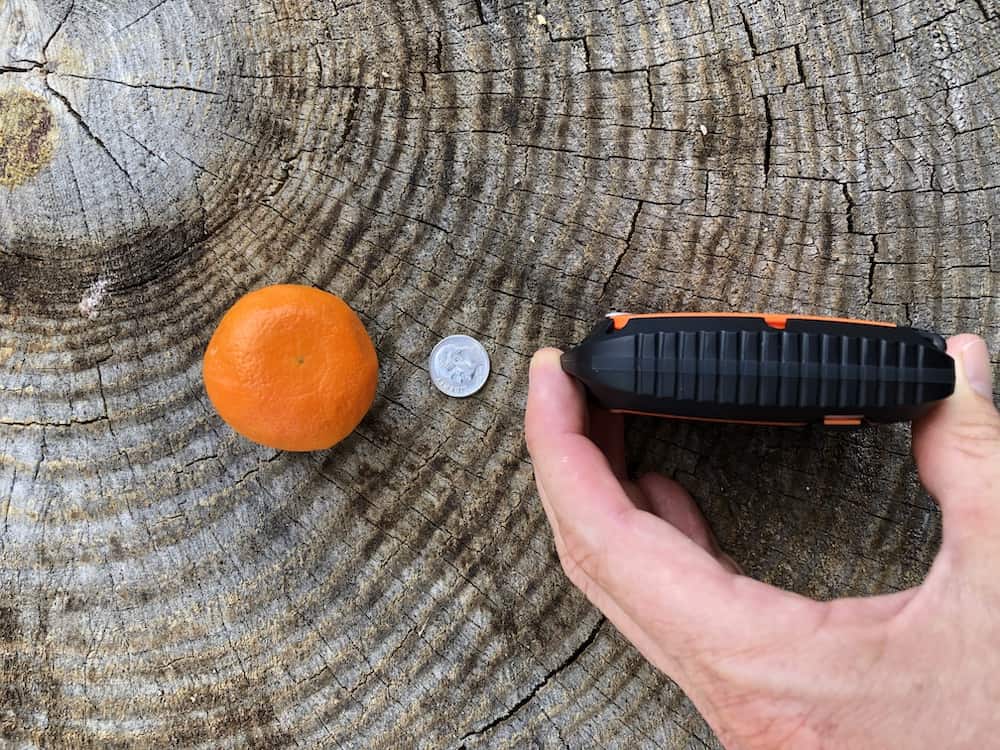
Third, the directions say to transmit your Check-In messages for 20 minutes. That means you are supposed to push the button, which causes the light to intermittently flash, signaling that the message is sending, and it will continue to transmit until you hit the button again to stop sending the message. It also says that it operates best in an open clearing with a direct line to the sky. How often are you going to want to sit idly for 20 minutes to make sure it had adequate time to send? And who knows, maybe it sent within the first minute, but because there is no verification that the message sent, you might waste time sitting there for no reason. In the future, I might not use this feature at all. Instead, I’ll just have Nikki check in on my location via the app to confirm I’m still moving forward because that pings out without me having to do anything at all (except activate the tracking feature when I start my run).
Fourth, the process to update your contacts and customize your messages you want sent out is a bit laborious. With each update you have to make the changes, plug in your Spot and synch the device. Seems like you should be able to pull from the cloud at this point. Not a huge deal, just a bit more time consuming than I’d anticipated.
Fifth, price. The unit is currently $100 and the subscription costs $12 a month. For your average ultra runner, it feels a bit expensive because you might not use it all that often. I’ll probably use it a dozen times a year. Maybe. That’s $12 per outing. Yes, it can save your life, but you definitely pay for that luxury.
Are There Any Good Alternatives?
Honestly, if I were to do it again, I’d spring for the Spot X. Same company, more advanced features. It allows for two-way messaging so you can text away from essentially anywhere. It also comes with the Check-In, Custom Message, and S.O.S. features as found in the Gen3. The Spot X unit is twice as expensive with an upfront cost of $200 for the unit and $12 per month will only get you 20 custom text messages. It’s also bigger and weighs almost twice as much as the Gen3. For a runner who likes to go as light as possible, the weight is a worthy consideration but is likely worth it for me personally. I think being able to know for certain that someone is on the way in case of an emergency is worth the upgrade to this device, but cost and weight certainly temper my resolve.
Also check out the Garmin inReach, which is the other major player in this space. Garmin seems to be a bit friendlier with its subscription/cancellation policies. Their units are lighter but the Spot battery life is superior. The Spot X is the only unit with a full keyboard for sending texts but the Garmin works off the Iridium Satellite System, which has 100% Pole-to-Pole coverage. For a deep dive comparison of all the Spot/Garmin SEND products, REI did a great job here.
Wrap It Up!
Alright, that’s a wrap on part 2 of our backcountry safety for ultra runners series. Our third and final installment will be on backcountry gear essentials for ultra runners. I’m planning on providing a few different lists: one for everyone that includes only the absolute essentials, one for the cautious runner that will include some extra items to ease the anxiety, and one for the overly overly cautious person who’d bring their entire house with them if it fit into their pack. Stay tuned!
If you enjoyed this article, make sure to sign up for our weekly Rise & Grind Newsletter! It’s the best way to stay connected to all the latest Treeline Journal updates and news!
Hope your summer adventures are shaping up nicely! If you have any questions or if you have experience using a SEND, feel free to leave a comment below!


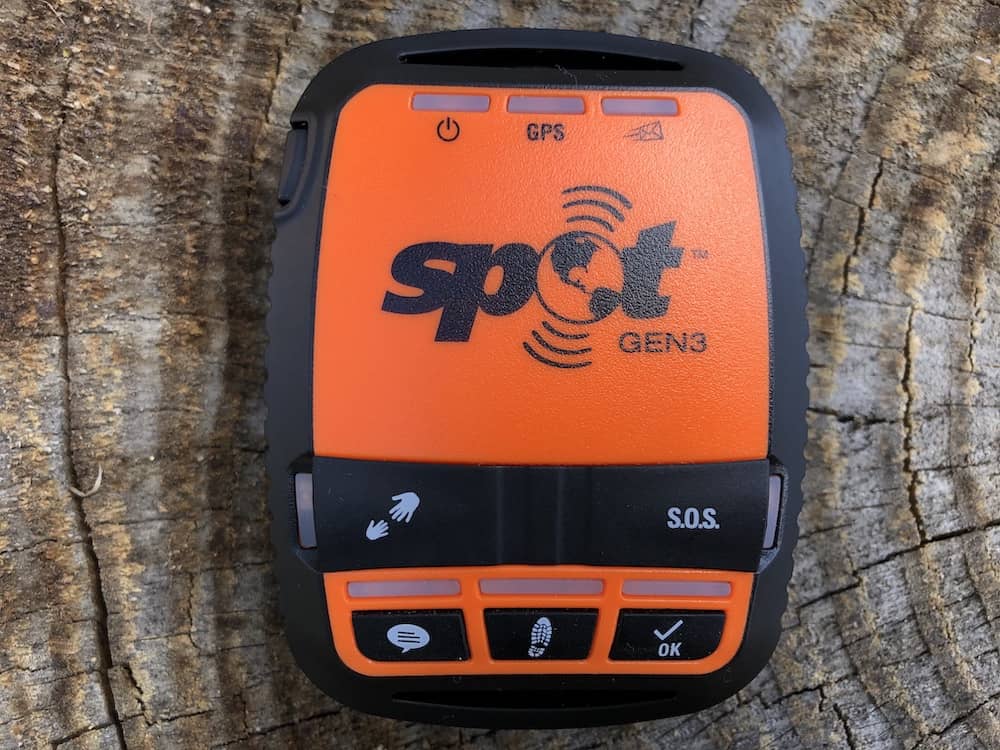
3 thoughts on “Backcountry Safety for Ultra Runners | Part 2: Satellite Emergency Notification Device (SEND)”